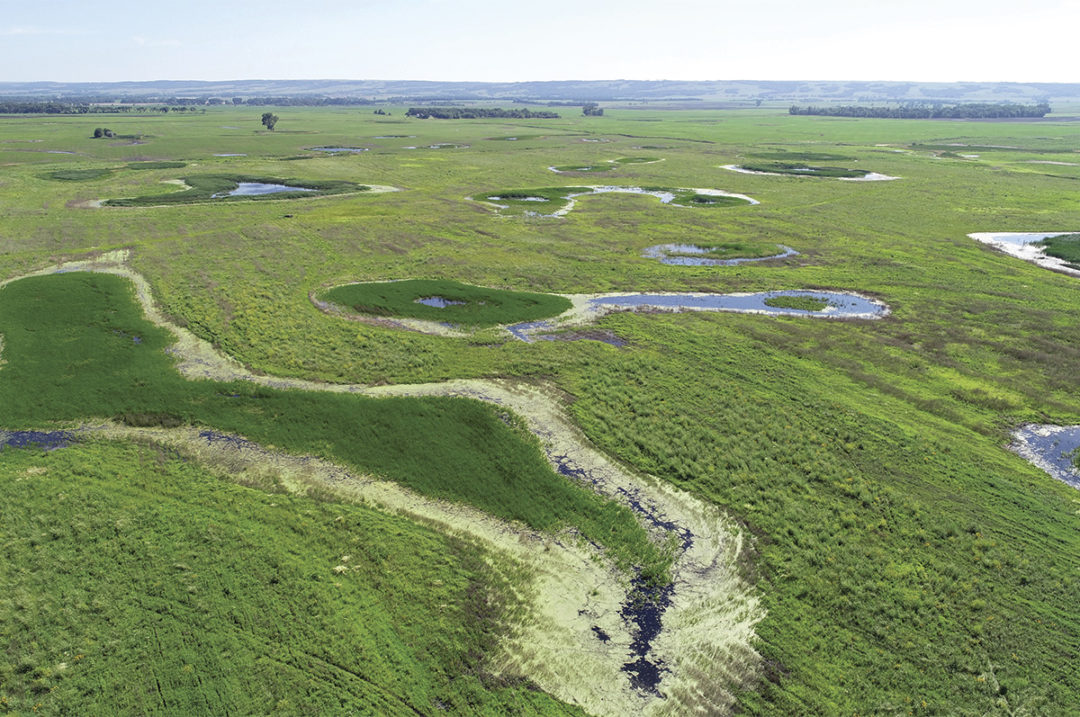The interests of waterfowl and cattle have a shocking number of similarities. What is good for ducks is often good for cattle and vice versa. At face value, Ducks Unlimited (DU) appears to be a hunting-centric organization, with little else under the surface.
Historically, the interests of conservation organizations and ranchers have been at odds. While often well-intentioned, many of the efforts put forth to conserve particular landscapes and species can be headache-inducing for farmers and ranchers.
DU operates under a mission of conserving, restoring and managing wetlands and associated habitat for North American waterfowl. The organization has made concentrated efforts in the last decade to team up with cattle producers with the shared mission of improving and conserving North American grasslands.
Billy Gascoigne is the director of agriculture and strategic partnerships at DU and notes the relationship between ranchers and waterfowl conservation is one born of a shared interest in America’s grasslands.
“We recognize the role of grazing with aiding in invasive species control and contributing to higher water and soil quality,” Gascoigne notes. “We are working with cattlemen across a broad geography to reach common goals in conserving grasslands. At the end of the day, both parties have a need for healthy grass and water to raise the next generation of both cattle and waterfowl.”
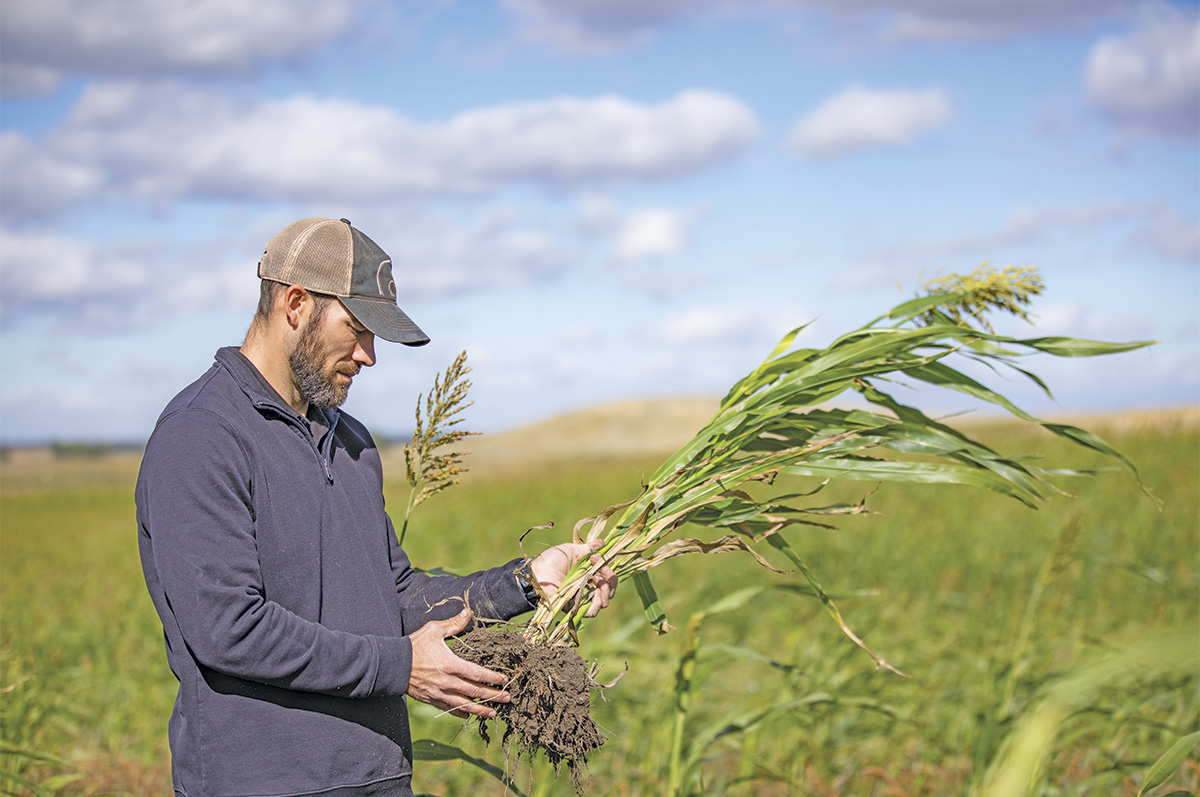
Ducks and cattle both thrive when grasslands are healthy and productive. Photo courtesy of Ducks Unlimited.
Conservation efforts
While DU is most known for its efforts in conserving wetlands, Gascoigne notes that most species of waterfowl are upland nesting birds and can seek a nest site up to a mile away from the nearest wetland, and healthy grasslands provide the cover these birds need to rear their young. In addition, there is value in keeping healthy, abundant water sources on ranching operations as well.
“The grassland is the quickest disappearing ecosystem in North America,” Gascoigne says. “The conversion of native prairie to row crops or housing developments is a blow to graziers and birds alike.”
He continued, “Ecologically speaking, grasslands have more vigor with managed grazing. I don’t know another group of people who care about preserving the prairie like ranchers do. The partnerships we have built, and the ones we continue to cultivate, just make sense given our common goals.”
DU offers a number of voluntary conservation programs for ranchers, including easements and cost sharing on infrastructure projects. While “easement” can tend to have a negative connotation in agriculture circles, a majority of these still allow for production and ensure these properties are kept as grasslands for a future forage base.
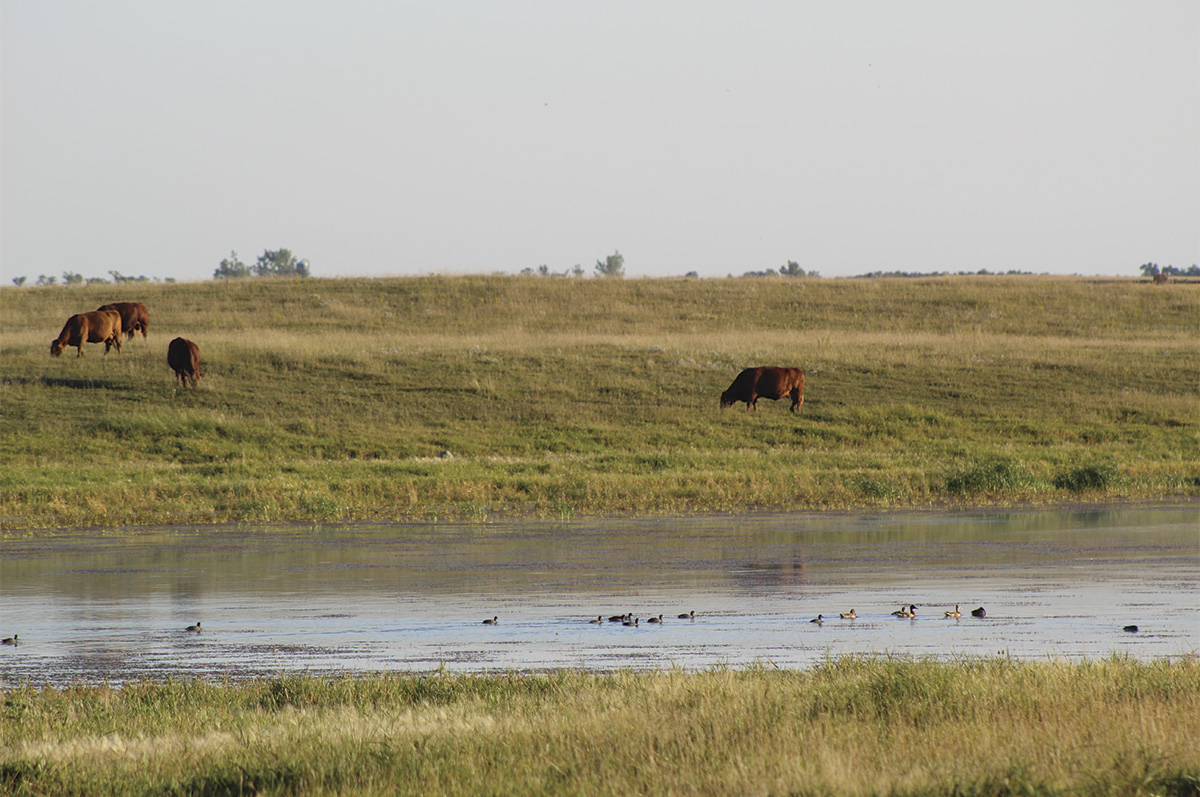
Cattle and ducks have a common need for good grass and healthy water systems. Photo courtesy of Ducks Unlimited.
“Easements have fundamentally come a long way over the last few decades, and all of our easements allow for production in some capacity,” Gascoigne says. “Some of them may have limits on activities like sod busting or a start date for hay harvest, but grazing and hay production are broadly allowed.”
Gascoigne notes easement programs are voluntary and offer financial incentives in the forms of tax breaks or outright cash payments, depending on the state and programs available.
“Ranchers recognize the value of these programs as they can either help acquire additional tracts of land, pay down debt or set up the next generation for success,” Gascoigne says. “We’ve had many instances where ranchers report it’s been an important step in their succession planning.”
Cost-sharing projects can take on a number of different forms, including permanent and temporary fencing projects for prescribed grazing projects and various water infrastructure projects.
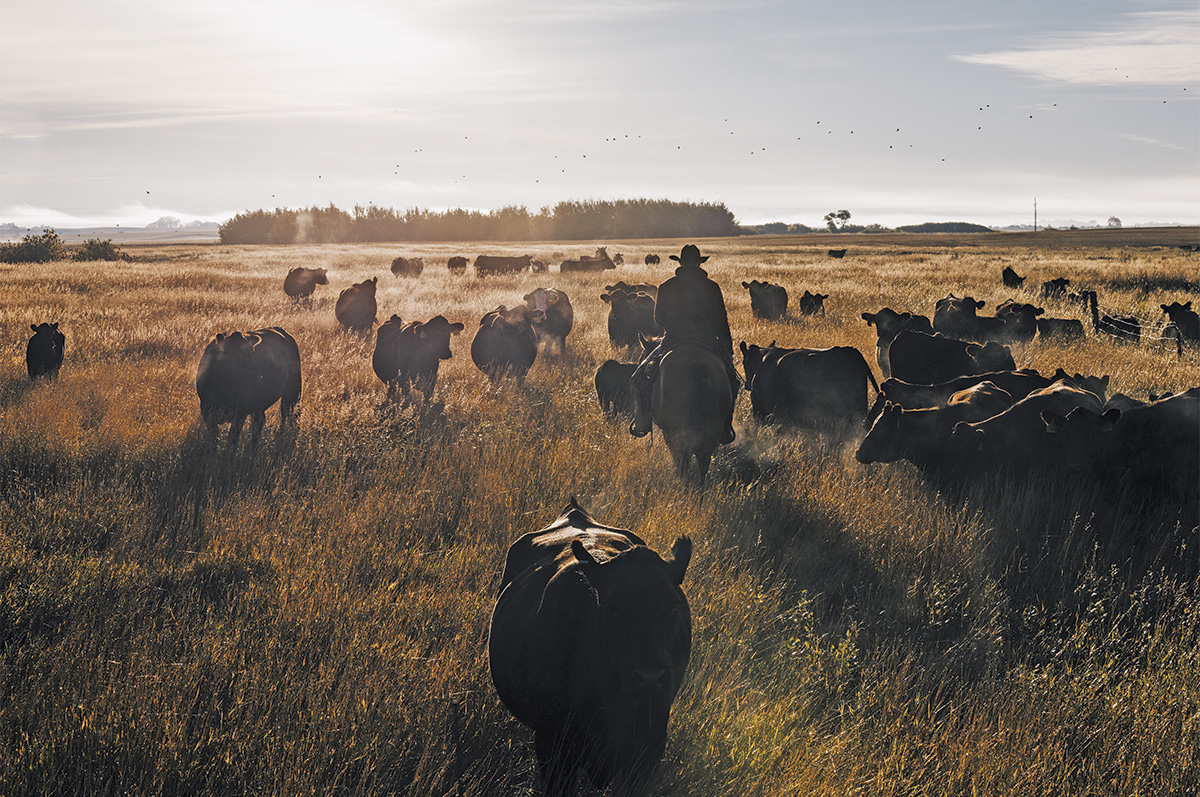 The prairie pothole region is not only home to a large portion of duck nesting areas, but is prime cattle country. Photo courtesy of Ducks Unlimited.
The prairie pothole region is not only home to a large portion of duck nesting areas, but is prime cattle country. Photo courtesy of Ducks Unlimited. Gascoigne also notes DU does not have infrastructure cost-sharing programs available in all states. “These programs tend to be focused in our core breeding areas in the northern Great Plains and surrounding states, or in areas where flood-irrigated hay meadows play an important ecological role,” Gascoigne explains. “A lot of these projects will allow for things like cover crop and residual crop grazing, as well as things like stock tanks and below-ground piping.”
Bruce Toay is the manager of conservation programs for DU in South Dakota and is tasked with overseeing the boots-on-the-ground team of biologists and agronomists working tirelessly on various projects throughout the state.
“We are seeing declines in the cattle inventory out on the landscape, and fewer people in the younger generations want to come back,” said Toay. “We understand here that when you lose cattle, you lose grass, and when you lose grass, you lose the wetlands that waterfowl so desperately need to thrive. We want to help the people who are willing to adopt and promote sound grazing and conservation practices.”
Toay noted there are a number of reasons people may seek partnerships with DU.
“We often see producers who want to get more out of their land and are looking for cost shares on things like fencing and facilities to improve distribution of grazing across their land,” Toay explained. “Infrastructure costs can be significant, and we can help producers keep their land in production while also leveraging resources with public funding and support from our corporate sponsors as we continue to promote sound grazing practices.”
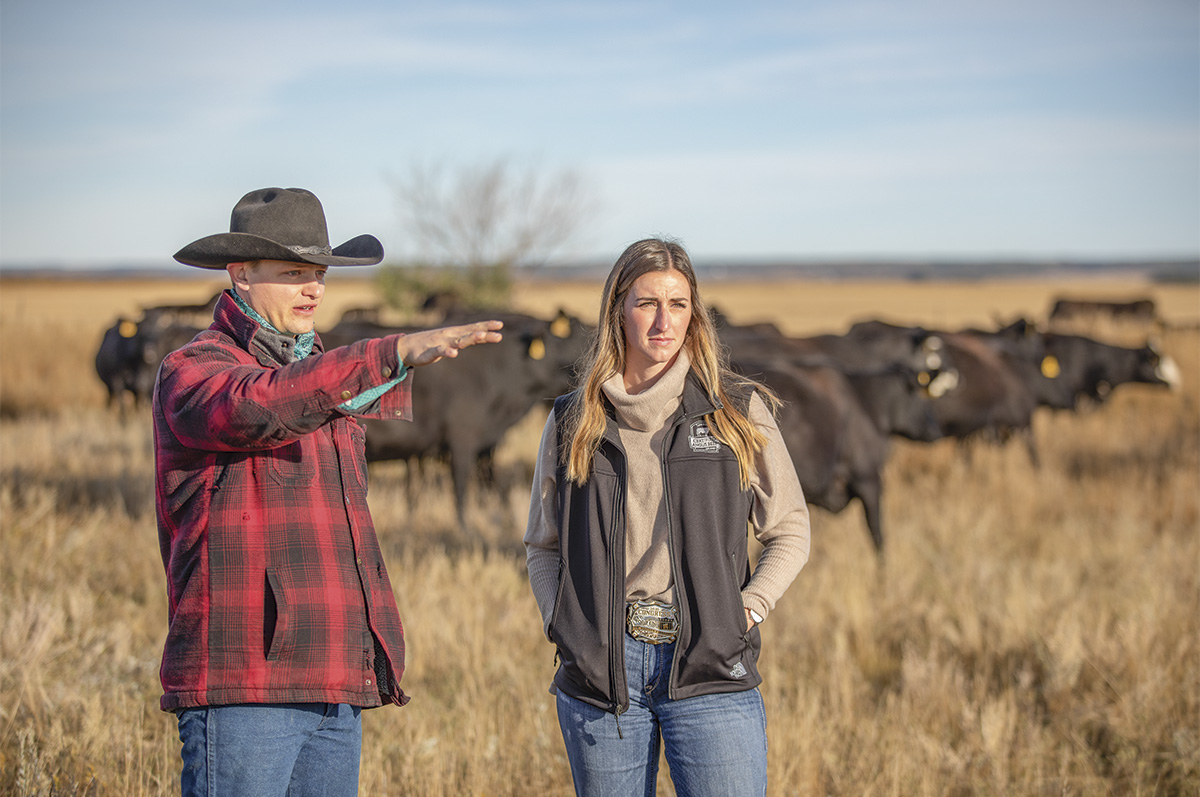
Ducks Unlimited is proud to work with cattle producers across the country who share a common goal of protecting North America’s precious grasslands. Photo courtesy of Ducks Unlimited.
Working with CAB
DU’s work in the sustainable grazing space has led to an interesting partnership with Certified Angus Beef (CAB), a leading premium beef brand. In an effort to promote conservation and high-quality beef from pasture to plate, the two groups are leveraging resources through a newly dubbed “Working Grasslands Conservation Initiative“ to provide resources and add value back to cattle producers.
According to CAB, the two organizations assembled $500,000 to launch the initiative, which has since secured an additional $2.5 million in grants to fund the initiative's work over the next three years.
“Certified Angus Beef is committed to demonstrating the value of beef production beyond a great steak,” says Bruce Cobb, executive vice president of production for Certified Angus Beef. “Healthy ecosystems come along as a byproduct of raising the best-tasting beef.”
He continues, “Ranchers work so hard to manage land and have an inherent desire to keep the grass in grass, and a lot of them are self-proclaimed grass farmers. They love the prairie and the species as much as we do at Ducks Unlimited. They don’t want this to succumb to houses or row crops or the next highway or the next solar farm. A lot of folks face this reality. They’re not making any more land, and they want to protect it.”
